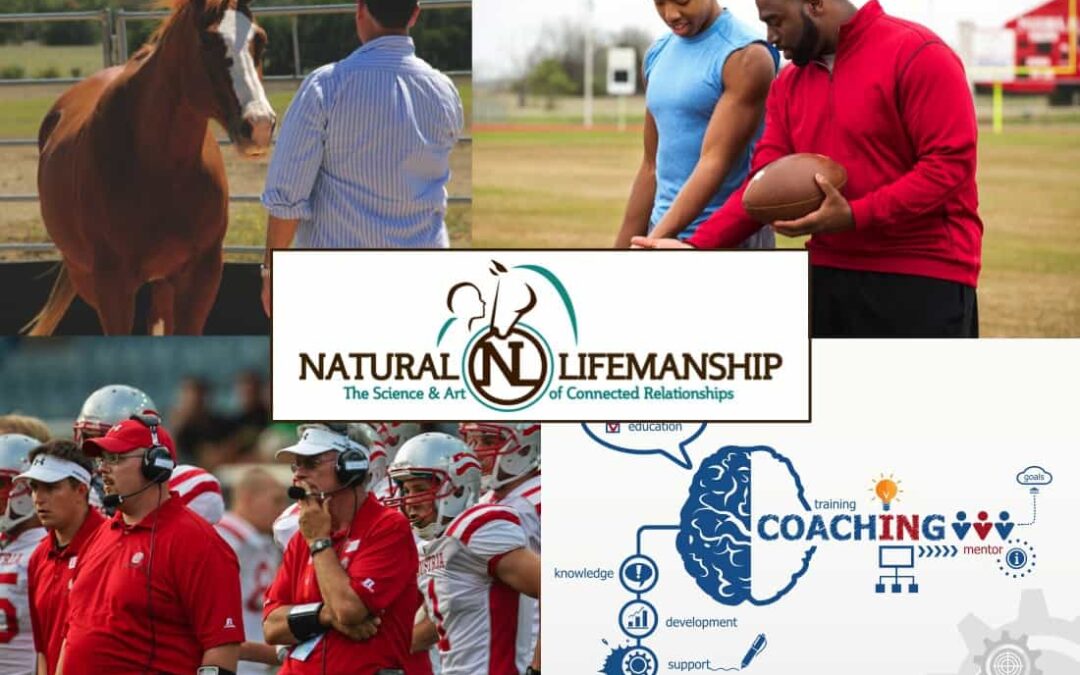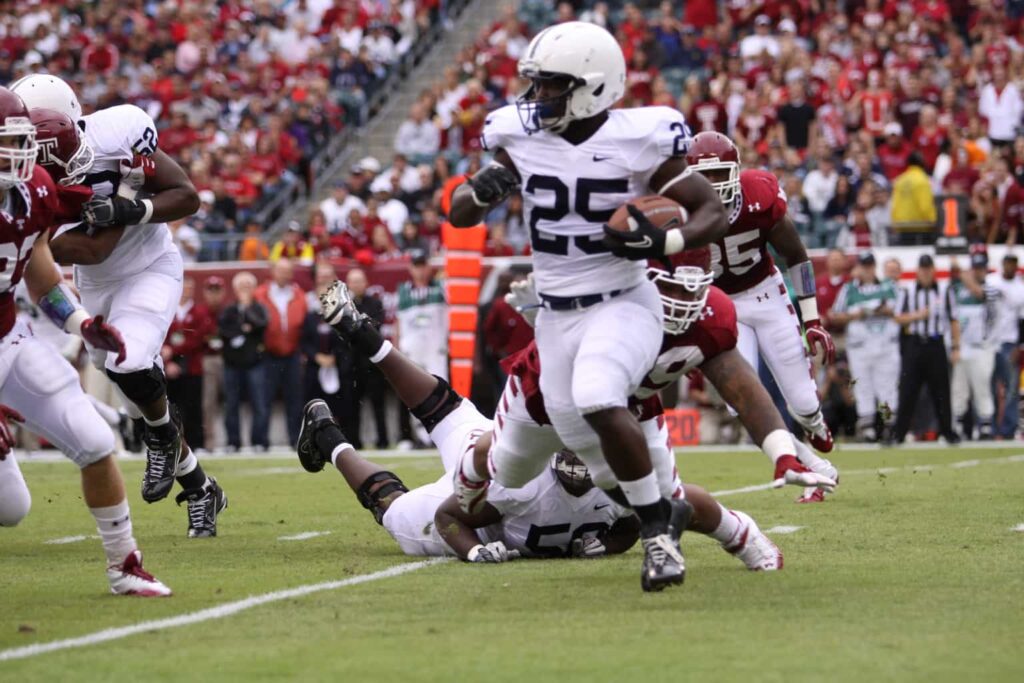What does Natural Lifemanship (NL), a model that trains people in trauma-focused equine assisted psychotherapy and equine-assisted trauma informed care have to do with coaching, specifically in the sport of football? Great question.
According to my brother, a college Offensive Coordinator, NL offers coaches the skills, knowledge, and experiences needed to provide a much-desired competitive edge that will help teams perform at their highest potential. After watching my team, the Texas Longhorns (Hook ‘ Em!) make an impressive comeback this season in the first four games, yet still show opportunities for growth in very specific ways, I have to agree with my brother.
My observations in this blog are football-specific, but they actually speak to how NL is valuable to coaches in general. Different roles certainly bring different demands, which impact the specific nature of training for various sports or other professions. Nevertheless, there are certain constants that pertain to coaching.
One of these constants is that coaches want those they coach to perform and be their very best. Performing at the top of our game and living a life in which we fulfill our potential are intrinsically connected with our personal development – physically, intellectually, emotionally, and simply as human beings. Being our best and helping others to be their best means functioning optimally, and optimal functioning in all of life’s domains depends to a great degree on the optimal functioning of our bodies, brains and nervous systems. Understanding how the body, brain, and nervous system work together benefits those striving for their personal best and especially those who coach.
Another constant in coaching is that it is relational. The relationship between coaches and those they coach is understood to be instrumental in achieving the desired outcome of players performing or individuals living up to their highest potential. If this were not the implicit assumption then coaches would be out of a job. Understanding how relationships contribute to (or impede) personal or professional growth and development is a central concern of coaching. Being highly knowledgeable or highly skilled oneself does not necessarily make one effective at coaching others. A good coach has to have the ability to connect with his or her players. A great coach is a master in the art of relationship.
Whether one is a football coach, a tennis coach, a life coach, an instructional coach, or an executive coach, many of the same principles apply.
The top four reasons football coaches may wish to hone their skills through Natural Lifemanship during the off season:
1. NL gives coaches specific tools for building connected relationships while challenging players to grow.
NL teaches coaches how to push players in a way that creates stronger relationships between coaches and players and amongst the team. Nobody argues that good coaching is relational at its core. If coaches don’t earn the trust and the respect of players and aren’t able to build cohesion within their team, all the drills and training in the world won’t prepare the team to execute winning performance on the field. The challenge for coaches is to build these relationships through interactions that are necessarily going to bring out the resistance in players.
Resistance is natural and necessary for growth.
We define resistance as searching for the right answer, and any close relationship and certainly any growth-oriented relationship will eventually bring out resistance in people. If coaches never encounter resistance amongst their players, they are arguably not pushing them beyond their physical and mental limits and thus not promoting growth. On the other hand, if they push them too hard or too fast and without having built a connected relationship, the result is players may comply but only from the lower (“survival”) regions of their brains, which compromises the level of development needed for truly optimal athletic performance. NL gives coaches a neurodevelopmentally sound, principle-based set of knowledge and skills to cultivate relationships with players that result in players’ full, willing cooperation with the expectations of the relationship and not just automatic, subconscious compliance or obedience that eventually interferes with optimal performance and with connected relationship.
2. NL gives coaches a practical understanding of the brain – specifically what is required of a player, neurologically speaking – and how to prepare players to perform at their highest level.
Clearly a good football player has to be athletic and physically well trained but they also have to be present and have their entire brain engaged during a match. They need well developed and integrated pathways between the brain’s lower, automatic reactive regions responsible for survival and its upper, thinking, planning, and strategizing regions, as well as the mid brain regions responsible for relationship and connection with others.
Think of what is required of players. Good players must:
1. quickly and agilely react and move on the field
2. while exercising an acute awareness of space and perception of fast moving and often unpredictable stimuli on multiple collision paths
3. while making split second decisions
4. while experiencing a heightened sense of threat and often physical pain
5. while staying connected and aware of one’s team – moving and reacting in a coordinated way with one’s teammates
6. while maintaining a high level or strategic awareness of the match as a whole (the score, how many time outs are left, how much time is on the clock, what half and quarter and down it is, what are the strengths and weaknesses on the other team, etc.) so that split second decisions are not simply reactive but are also strategic in nature
7. and, they must be able to produce an intensely high level of explosive body energy while staying mentally calm and connected in the present moment
Football is thus very demanding when played at the highest levels. The list above specifies several discrete competencies that are involved when the ball is in play. At any moment multiple regions in the brain must be activated, functioning optimally, and communicating efficiently with other areas of the brain to execute quick, explosive action coordinated with calm planning and purpose.
By way of example, let’s say a team is ahead by one goal and there are only a few seconds left in the second quarter. The offense is in the lead. The wide receiver who catches the pass on the opponents’ 30 yard line starts running toward the goal. Naturally, his adrenaline is rushing and his single-minded impulse is to run as fast and far as he can to reach the goal, which seems deceptively near. However, given the circumstances, a better decision would be to run out of bounds giving his team the opportunity to score a field goal and gain a 10-point lead before the second half. The impulse to run toward the goal and the decision to run out of bounds are naturally exclusive of one another. They actually activate different neural networks in the brain. The ability to act according to strategic judgment that goes against one’s impulses is the hallmark of self-regulation, which requires integration or well developed pathways between the reactive lower regions of the brain and the thoughtful, problem-solving neocortical regions. Knowing this and observing this player’s behavior, a coach could determine that what would be helpful moving forward is helping the player reinforce self-regulation neural networks through specific exercises that have that effect.
NL gives coaches the tools they need to intentionally train players with the experiences needed to build and reinforce integrated networks in the brain that allow them to execute peak performance during a game.
3. NL gives coaches a trauma-informed lens that allows them to understand and work effectively with individual players who show up with histories that impact their abilities to perform and to relate in desired or optimal ways.
Trauma is understood today very differently than it was in the past. We now understand that multiple “little” or complex traumas – chaos, unpredictability, hurts, insults, neglects – especially relational ones – throughout childhood cause children to adapt in ways that alter their developmental trajectory over time. Behaviors that serve to protect people when they are faced with genuine threat are adaptive in the sense that they ensure our survival. As young adults on a football team or in a classroom or in the community at large (wherever a genuine threat is no longer present), these adaptive behaviors often become maladaptive. Maladaptive (i.e., situationally inappropriate and damaging) patterns of behavior get players into trouble and sometimes kicked off the field and off teams. Coaches are well served by having a trauma-informed lens, which comes from an understanding of neurobiology and how traumas (little or big) impact it. This will help coaches understand and work with players who are easily triggered, reactive, impulsive or otherwise impeded by behaviors that don’t serve them or their team well. Coaches can use the principles of NL to help players overcome those patterns through new relational experiences. Coaches must be equipped to respond effectively to players when they behave in ways that damage their relationships with others or with themselves.
4. Coaches need practice, too. Coaching is an art as much as it is a science. Because it involves relationship and relationships are dynamic and highly individual in nature, good coaching is not something that can be learned and developed at the intellectual level alone. By employing horses in our trainings for coaches, coaches have the opportunity to practice embodying what they learn through interacting mindfully with a horse. Horses are known for giving honest feedback because they don’t respond to our words or even our outer actions. They respond to what they sense from our body energy, something we are often unaware of ourselves. In the same way, good coaching requires a coach be mindful and attuned to their players. NL provides a powerful training experience to cultivate knowledge, mindfulness, and attunement that give coaches the edge they need to be more effective with those they coach.
For more information on NLR – our line of trainings and certifications for coaches – Contact Us





Recent Comments